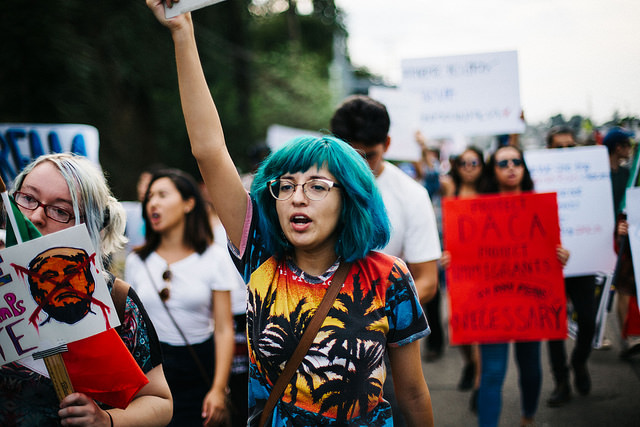One week ago, President Donald Trump announced that he would be ending an Obama-administration executive action that would affect the lives of 800,000 immigrants. This is a three-part series on DACA outlining the facts, concerns, and possible outcomes surrounding the legislation in question.

Photo by Molly Adams on Flickr
What is DACA?
Deferred Action for Childhood Arrivals (DACA) is an Obama issued executive action that came into effect in 2012. Obama issued order after another unsuccessful attempt at passing the Development Relief Education for Alien Minors (DREAM) Act in Congress. (More on the DREAM Act in following article)
DACA protects the children of undocumented immigrants who were illegally brought into the United States by their parents. The deferred action order grants these children with a special status that permits them to reside and to work in the United States without fear of deportation.
According to USCIS the requirements for eligibility are as follows:
- Were under the age of 31 as of June 15, 2012;
- Came to the United States before reaching your 16th birthday;
- Have continuously resided in the United States since June 15, 2007, up to the present time;
- Were physically present in the United States on June 15, 2012, and at the time of making your request for consideration of deferred action with USCIS;
- Had no lawful status on June 15, 2012;
- Are currently in school, have graduated or obtained a certificate of completion from high school, have obtained a general education development (GED) certificate, or are an honorably discharged veteran of the Coast Guard or Armed Forces of the United States; and
- Have not been convicted of a felony, significant misdemeanor, or three or more other misdemeanors, and do not otherwise pose a threat to national security or public safety.
Currently, there are about 800,000 young adults between the ages of 16-35 years old that are protected by the program.
On September 5, 2017, President Trump made the decision to rescind DACA in an effort to toughen immigration enforcement. Subsequently, he gave Congress six months to come up with some kind of comprehensive immigration reform to resolve this issue.

Photo by Molly Adams on Flickr
What does this mean for current DACA recipients?
The newly ordered initiative made by President Trump has instigated widespread fear of mass deportation for current DACA recipients. The future for these immigrants now seems very uncertain.
The bulk of DACA recipients are Latino, with 79% of immigrants being of Mexican descent. According to the same report, the most common age that these immigrants entered the country was at 3 years old. Unsurprisingly, President Trump’s decision does not run well with his track record with Mexicans.
Depriving American raised and educated immigrants the opportunity to work would limit their ability to succeed in this country, and severely impact the communities and organizations that have already employed DACA recipients.
Public Response
The repeal has been followed by public outcry, protest, and condemnation.
Among those declaring their outrage and disappointment include hundreds of technology industry leaders and prominent CEOs. Alongside them, former President Obama issued a statement via Facebook denouncing the decision:
This is about young people who grew up in America – kids who study in our schools, young adults who are starting careers, patriots who pledge allegiance to our flag. These Dreamers are Americans in their hearts, in their minds, in every single way but one: on paper…they may not know a country besides ours. They may not even know a language besides English…to target these young people is wrong – because they have done nothing wrong. It is self-defeating… and it is cruel.
15 different states, and the District of Columbia have also filed a lawsuit against President Trump following Tuesday’s news, arguing that the repeal is driven by President Trump’s discriminatory bias against Mexicans.
Trump has made it clear that the DACA decision now lies in the hands of Congress. The next six months will determine what future lies ahead for DACA recipients and their families.
By: Nadia Lopez

